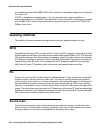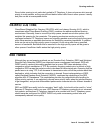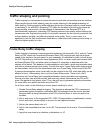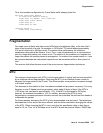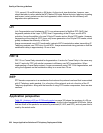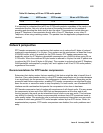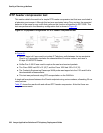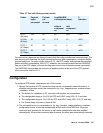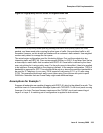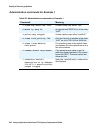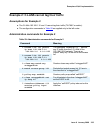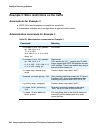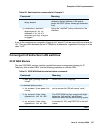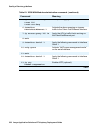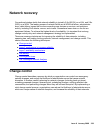
Quality of Service guidelines
332 Avaya Application Solutions IP Telephony Deployment Guide
See the Cisco documentation for more specific configurations on other types of WAN links (that
is, Frame Relay and ATM). Configuration for the X330WAN router is very similar to Cisco, and is
well documented in the X330WAN User Guides. For this documentation, see the P330 section
at:
http://www.avaya.com/support
Examples of QoS implementation
This section contains sample commands for QoS implementation on Avaya products and Cisco
products.
Examples given include:
● Example 1: Cisco router configuration for point-to-point WAN links
● Example 2: C-LANS cannot tag their traffic
● Example 3: More restrictions on the traffic
● Converged infrastructure LAN switches
Example 1: Cisco router configuration for point-to-point WAN
links
There is a three-step process to turn on QoS on a Cisco router:
1. Set up a class map that defines “interesting traffic” to be prioritized.
2. Select a queuing strategy. In this case, use a policy map to set priority. Set up a route map
that sets the priority level (critical).
3. Apply the policy map to an interface.
In Figure 92:
High-quality service across a congested WAN link on page 333, set priority-aware
Class-Based Weighted Fair Queuing (CB-WFQ) with Low Latency Queuing (LLQ). Although
there are more aggressive QoS strategies, they can have a severe impact on data performance.
Those other strategies, including Priority Queuing, Custom Queuing, and RSVP, can be
implemented at a later date, if conditions warrant. This is a good starting point.
Figure 92:
High-quality service across a congested WAN link on page 333 is used as a
reference point. The objective is to assure high quality of service to IP Telephony applications
across the congested WAN link.



